This article was co-authored by Zora Degrandpre, ND. Dr. Zora Degrandpre is a Natural Health Doctor and Licensed Naturopathic Physician in Vancouver, Washington. She is a grant reviewer for the National Institutes of Health and the National Center for Complementary and Alternative Medicine. She received her ND from the National College of Natural Medicine in 2007.
There are 13 references cited in this article, which can be found at the bottom of the page.
wikiHow marks an article as reader-approved once it receives enough positive feedback. This article received 11 testimonials and 100% of readers who voted found it helpful, earning it our reader-approved status.
This article has been viewed 360,346 times.
When you're feeling those familiar symptoms of a cold coming on you might think there is nothing you can do to prevent it. However, adding some garlic to your regime might just give your immune system the boost it needs to lessen the impact of the illness. While “cure” may be a bit of an exaggeration, you can use garlic to get yourself through a cold or flu faster and with less misery!
Steps
Using Garlic to Help With Cold Symptoms
-
1Investigate whether garlic helps with cold symptoms. A recent study looked at the effectiveness of garlic in 146 people over a three month period. Those that took a garlic supplement had 24 occurrences of cold symptoms, as opposed to 65 occurrences in those that did not take garlic. Also, those that took garlic had 1 day less of cold symptoms. Although some studies support the use of garlic for colds, more research needs to be done to determine whether it is effective.[1]
- In another study, those that took garlic had fewer symptoms of a cold and felt better sooner, possibly because a subset of immune cells were increased in those people taking 2.56 g of a garlic supplement daily.[2]
- Most researchers believe that sulfur-containing compounds in garlic, allicins, are responsible for the anti-common cold effects.[3] However, there are a number of other elements in garlic, such as saponins and amino acid derivatives, that are thought to play a role in reducing the viral load, though it is not clear how they might do this.[4]
-
2Deal with the smell. Many may be concerned about the smell of garlic. The same substances that appear to be effective against the cold virus are the ones that are also responsible for the smell. So, in order to help alleviate your cold symptoms, you are going to have to deal with the smell.
- The good news is that you should be staying home from work and school and staying away from other people. You should also be resting and drinking plenty of fluids. All this means is that while the garlic may smell, for the most part, only you and your loved ones will be around. This seems like a small price to pay for getting better sooner with fewer symptoms!
Advertisement -
3Eat raw garlic. Always start with fresh garlic if possible. Peel the “paper” off the garlic and use a garlic press or the side of a knife blade to crush the garlic. Eat about 1 raw garlic clove every 3-4 hours. Just peel and eat![5]
- If you are not a fan of the taste, wash the garlic down by mixing it with orange juice.
- You can also add it to lemon water. Add the garlic to a mixture of 2 tablespoons (29.6 ml) of lemon juice and 6-8 ounces of water and stir.
- Raw garlic can also be added to honey water. Honey has both antibiotic and antiviral properties. Add 1–2 tablespoons (14.8–29.6 ml) of honey to 6-8 ounces of water and stir.[6]
-
4Cook with garlic. While raw garlic appears to be the best, cooked garlic still contains allicins that are thought to be effective. Peel and either crush or mince the garlic cloves. Then let the crushed/minced garlic sit for 15 minutes. This allows enzymatic activity to “activate” the allicins in garlic.[7]
- Use 2-3 cloves of garlic for every meal during a cold. If you are eating light, add the crushed/minced garlic to your chicken or vegetable broth and heat it as you normally would. If you are eating normally, try cooking garlic alongside your vegetables or add garlic to rice as it cooks.
- You can also add the crushed/minced garlic to tomato or cheese sauces, once you are feeling better. Rub the crushed/minced over meat or poultry and cook the meat and poultry as you normally would.
-
5Make a garlic tea. The hot liquid can also help with decongestion. Bring 3 cups of water and 3 cloves of garlic (cut in half) to a boil. Turn off the heat and add 1/2 cup of honey and 1/2 cup of fresh lemon juice with the seeds and the rind included.[8] These contain a significant amount of vitamin C and antioxidants.[9]
- Strain the tea and sip throughout the day.
- Refrigerate leftover tea and reheat as needed.
-
6Use a garlic supplement. This can be a good method for those that are very opposed to the taste of garlic. To help reduce the symptoms of your cold, take 2-3 grams of garlic a day in divided doses.[10]
Identifying and Treating the Common Cold
-
1Understand the common cold. The common cold is usually caused by a rhinovirus. Rhinoviruses cause upper respiratory infections (URIs) most commonly, but they can cause lower respiratory infections and sometimes, pneumonia. Rhinoviruses are most prevalent October through March.[11]
- The incubation period is usually short, only 12-72 hours after exposure to the virus. Exposure usually occurs by being in relatively close proximity to someone who already has a cold and who coughs or sneezes.[12]
-
2Identify the symptoms of the common cold. Nasal dryness or irritation is often the first symptom. Sore throat or an irritated, itchy throat is another common early symptom.[13]
- These are usually followed by nasal discharge, nasal congestion, and sneezing. These usually get worse over the next 2-3 days after the first symptoms.
- The nasal discharge is usually clear and watery. It may become thicker and greenish-yellow.
- Other symptoms include: headache or body aches, watery eyes, facial and ear pressure from congested sinuses, loss of sense of smell and taste, cough and/or hoarseness, vomiting after coughing, irritability or restlessness, and a low-grade fever may occur, usually in infants and preschool children.
- The common cold can be complicated by ear infections (otitis media), sinusitis (inflammation of the sinuses), chronic bronchitis (lung inflammation with congestion and coughing) and worsening of asthma symptoms.[14]
-
3Treat the common cold. There is no current cure for the common cold. Instead, you should focus on alleviating the symptoms. The medical recommendations include:[15]
- Get plenty of rest.
- Drink lots of fluids. These fluids can include water, juices, and clear chicken or vegetable broths. Chicken soup IS actually very good for the common cold.[16]
- Gargle with warm salt water. This will help make a sore throat feel better.
- Use cough drops or throat sprays if you have a severe cough that is not allowing you to get enough rest.
- Take over-the-counter pain or cold medicines. Make sure to follow the directions on the packaging.
-
4Assess whether the illness is severe enough to warrant a visit to the doctor. Most of the time, there is no need to see a physician. If, however, you or your child experience any of the following symptoms, call your doctor:[17]
- A fever with a temperature higher than 100.4 °F (38 °C). If your child is younger than 6 months old and has a fever, call your doctor. For children of any age, if the fever is 104 °F (40 °C) or greater, call your physician.
- If the symptoms last more than 10 days
- If the symptoms are severe or you experience unusual symptoms, such as severe headaches, nausea or vomiting or difficulty breathing.
Expert Q&A
-
QuestionSources claim that cooked garlic is useless because heat destroys allicin. Is this true?
 Zora Degrandpre, NDDr. Zora Degrandpre is a Natural Health Doctor and Licensed Naturopathic Physician in Vancouver, Washington. She is a grant reviewer for the National Institutes of Health and the National Center for Complementary and Alternative Medicine. She received her ND from the National College of Natural Medicine in 2007.
Zora Degrandpre, NDDr. Zora Degrandpre is a Natural Health Doctor and Licensed Naturopathic Physician in Vancouver, Washington. She is a grant reviewer for the National Institutes of Health and the National Center for Complementary and Alternative Medicine. She received her ND from the National College of Natural Medicine in 2007.
Natural Health Doctor It is somewhat true that cooking decreases the amount of allicin. Cooking does not completely destroy the effectiveness of allicin or the other healthy components of garlic. Raw garlic does contain more allicin, but if given a choice between cooked garlic and no garlic at all, most would recommend the cooked garlic, even with the decreased levels of allicin.
It is somewhat true that cooking decreases the amount of allicin. Cooking does not completely destroy the effectiveness of allicin or the other healthy components of garlic. Raw garlic does contain more allicin, but if given a choice between cooked garlic and no garlic at all, most would recommend the cooked garlic, even with the decreased levels of allicin.
References
- ↑ https://www.ncbi.nlm.nih.gov/pmc/articles/PMC6465033/
- ↑ http://www.ncbi.nlm.nih.gov/pubmed/22280901
- ↑ http://www.ncbi.nlm.nih.gov/pubmed/22280901
- ↑ http://www.ncbi.nlm.nih.gov/pubmed/16484550
- ↑ https://www.ncbi.nlm.nih.gov/pmc/articles/PMC6465033/
- ↑ http://exploreim.ucla.edu/wellness/an-inside-scoop-on-the-science-behind-chicken-soup-and-the-common-cold/
- ↑ https://pubmed.ncbi.nlm.nih.gov/11697022/
- ↑ https://www.food.com/recipe/garlic-tea-139436
- ↑ http://ucce.ucdavis.edu/files/datastore/234-25.pdf
- ↑ http://www.ncbi.nlm.nih.gov/pubmed/22280901
- ↑ https://emedicine.medscape.com/article/227820-overview#a5
- ↑ http://emedicine.medscape.com/article/227820-overview
- ↑ https://www.mayoclinic.org/diseases-conditions/common-cold/symptoms-causes/syc-20351605
- ↑ https://www.mayoclinic.org/diseases-conditions/common-cold/symptoms-causes/syc-20351605
- ↑ https://www.mayoclinic.org/diseases-conditions/common-cold/diagnosis-treatment/drc-20351611
- ↑ http://www.mayoclinic.org/diseases-conditions/common-cold/in-depth/health-tip/art-20048631
- ↑ https://www.cdc.gov/features/rhinoviruses/index.html
About This Article
While garlic can't cure the common cold, it does have many antibiotic and antiviral properties that can help alleivate your symptoms. Use fresh garlic for the best results. All you need to do is peel it and eat 1 raw clove every 3 to 4 hours. If you can’t stand the taste, wash it down with some orange juice. Although it’s less effective, you can also cook garlic in a meal, like pasta or soup. Alternatively, boil water with a few garlic cloves cut in half in it. Then, strain the tea and add lemon juice and honey to disguise the taste. In addition to consuming garlic, make sure you get plenty of rest and drink lots of fluids to help you get better sooner. For more tips from our Nutritional co-author, including how to figure out if you have a cold, read on!
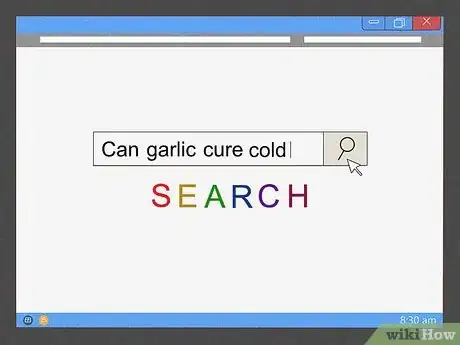
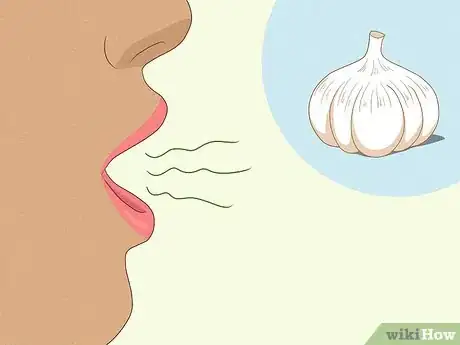
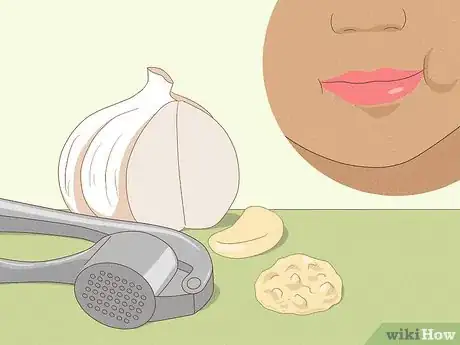
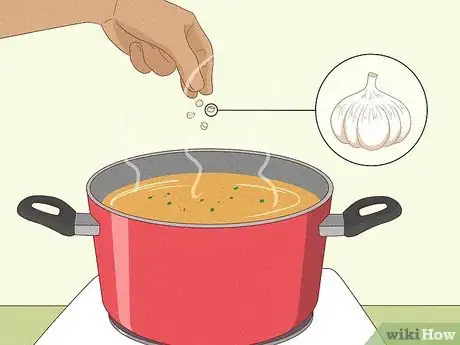
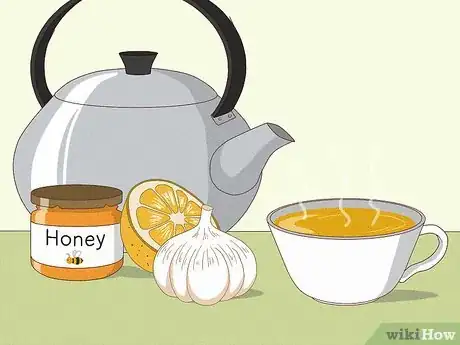
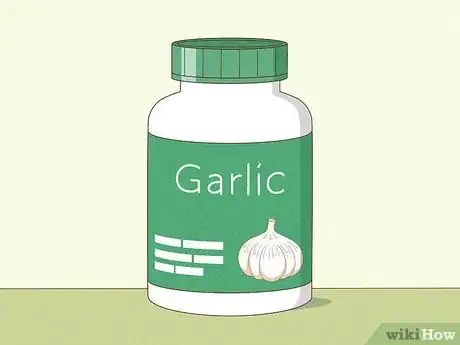
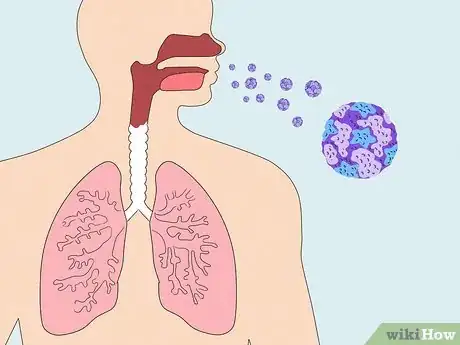

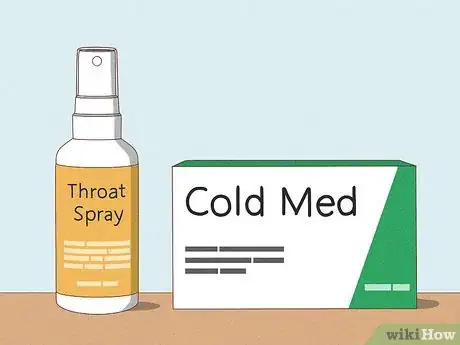
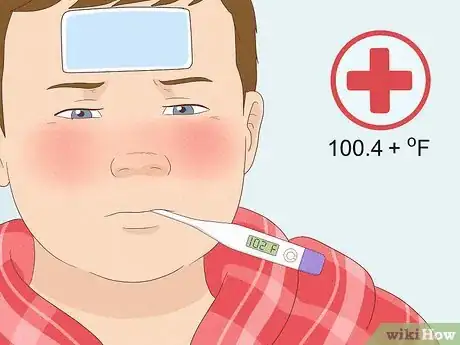
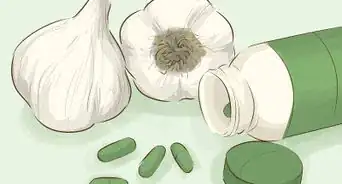





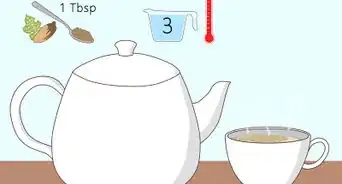

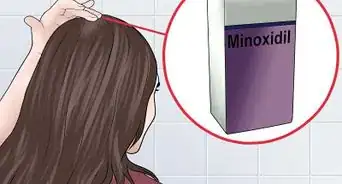














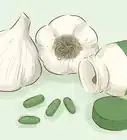







































Medical Disclaimer
The content of this article is not intended to be a substitute for professional medical advice, examination, diagnosis, or treatment. You should always contact your doctor or other qualified healthcare professional before starting, changing, or stopping any kind of health treatment.
Read More...